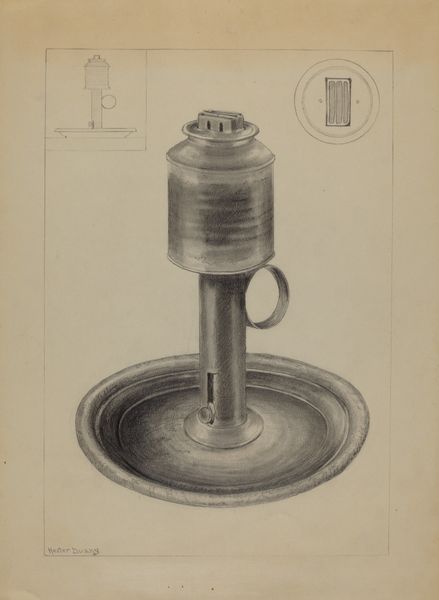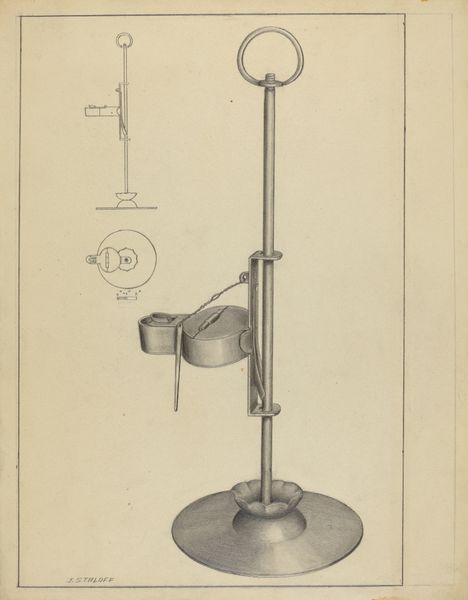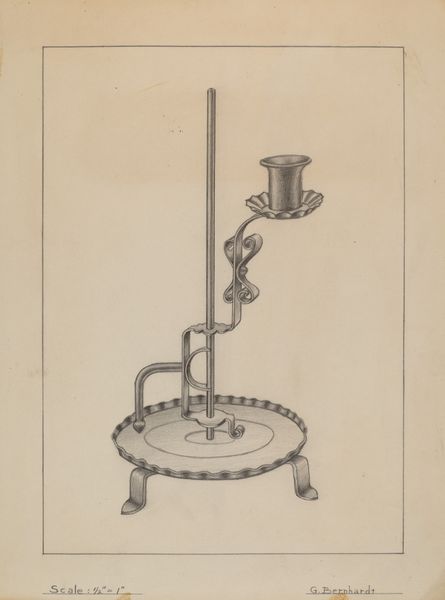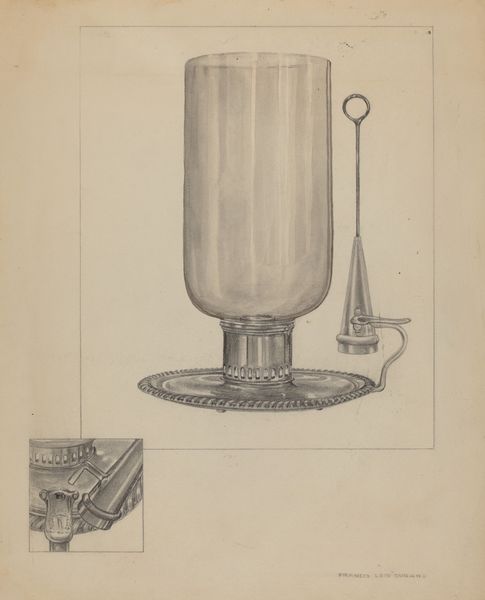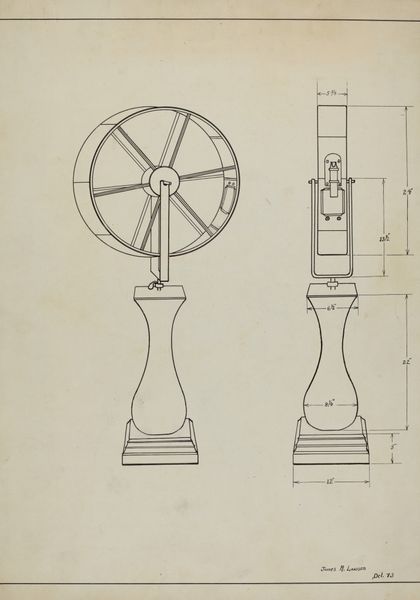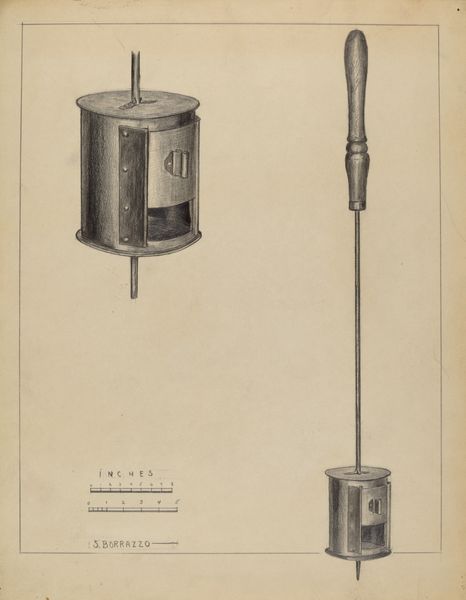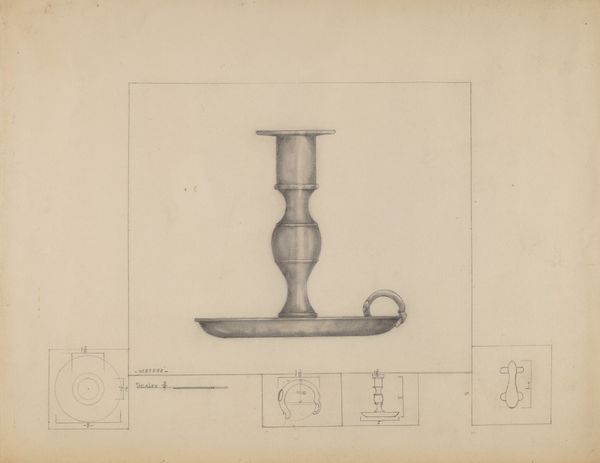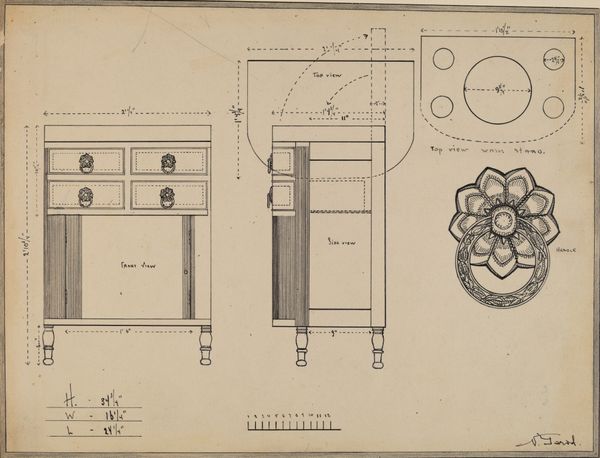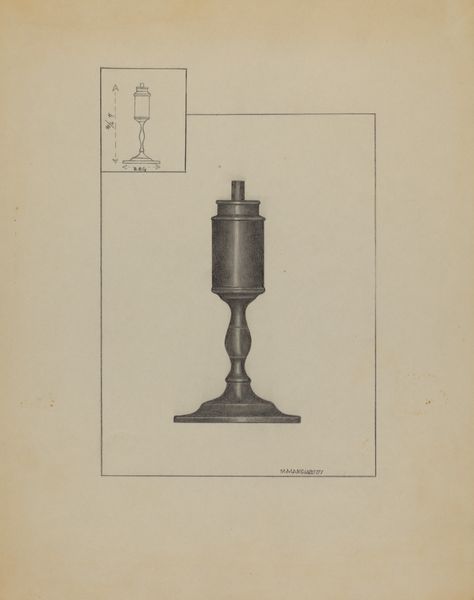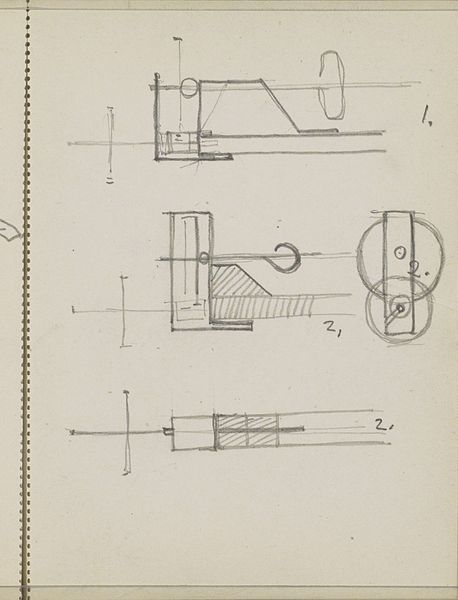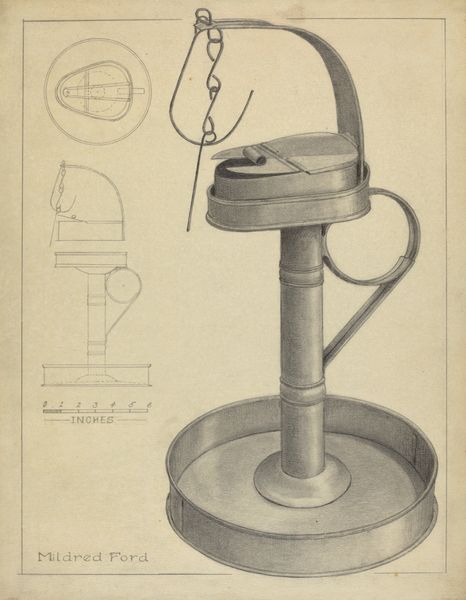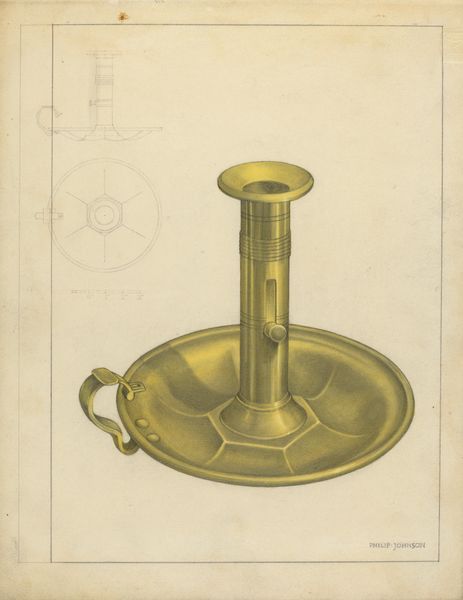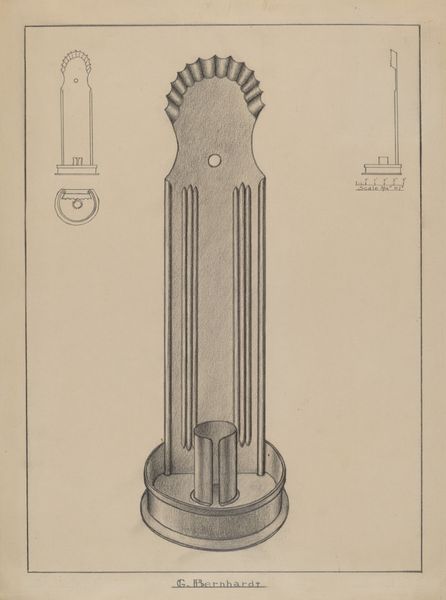
drawing, paper, pencil
#
drawing
#
paper
#
geometric
#
pencil
#
modernism
Dimensions: overall: 30 x 22.8 cm (11 13/16 x 9 in.)
Copyright: National Gallery of Art: CC0 1.0
Curator: This graphite drawing on paper, "Silver Nutmeg Grater," by Michael Fenga, dating from around 1936, is a fascinating intersection of art and design. What's your initial impression? Editor: My eye is drawn to its quiet precision. The rendering of light on the metal suggests a concern for mass production, but there’s also the hand of the draughtsman carefully defining the form and utility of the piece. It strikes me as both clinical and curiously intimate. Curator: It’s interesting you say "intimate." When I view this object I consider domestic labor and consider who grated the nutmeg and what privileges or subjugations defined the hand wielding it. Did their identity inform this process? Editor: Yes, the tool stands as a stark metaphor, both in drawing and if materialized, because it's purpose built. The materiality hints at social and class structure as this would not be commonplace in some lower economic spaces at that time. We must also understand its functionality and construction because it will ultimately dictate its users as it’s clearly defined and not multi-use. Curator: Precisely! We must consider whose labor went into creating and maintaining these systems. I wonder if Fenga intended any social commentary in this seemingly innocuous sketch of a household object, since these spaces were considered "womens work." Editor: Perhaps. Though the precision suggests an engineer's plan, the softness of the graphite betrays an artist's hand too. Think about how the shift in industry demanded technical illustration, moving many traditional fine art draughtsmen towards this pursuit. Mass-production's art became the visual language of consumption in modernity. Curator: The geometric forms and clean lines definitely reflect the influence of Modernism, as well as streamlining movements happening then in architecture and graphic design, which I see reflected clearly in the details on the paper itself. These "blueprints" were never solely informative, even though we view it in an engineering framework now. The dimensions scrawled off-center also speaks volumes about material considerations. Editor: And thinking of those movements' influence, consider the social context. The rising middle class would create the economic desire for such goods to begin with and they themselves would then reinforce that economic base. To fully assess a humble object like this one opens into consideration on labor, the distribution of capital, design, and intent. Curator: Viewing this nutmeg grater reminds us that the story of any object—even the most utilitarian—is woven into larger narratives of identity, power, and progress, that are still present. Editor: Absolutely. Seeing something ordinary depicted through labor and materials exposes it as a concentrated expression of both design and class.
Comments
No comments
Be the first to comment and join the conversation on the ultimate creative platform.
